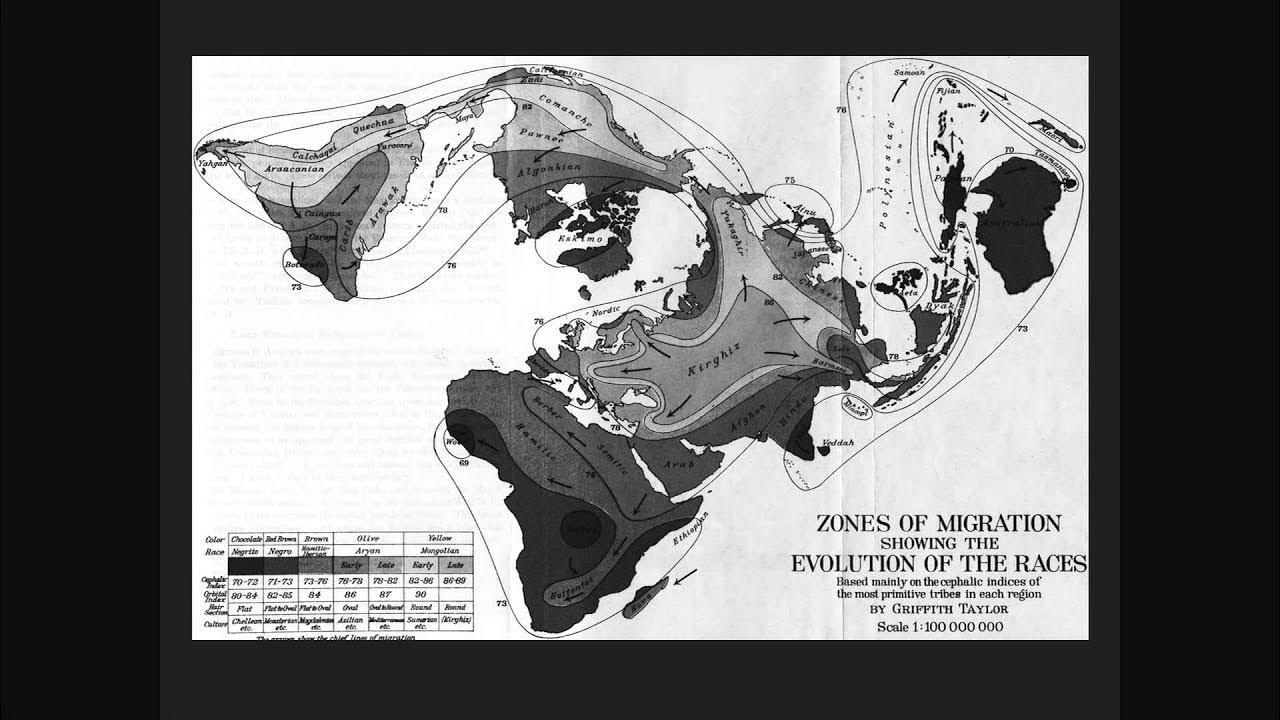The Problem With Africa's Borders
Summary
TLDRThis video examines the lasting impact of European colonization on Africa, focusing on how profit-driven motives led to arbitrary borders that fragmented ethnic groups. It discusses the resulting conflicts and civil wars, suggesting a redefinition of borders based on religion, language, and ethnicity as a potential pathway to stability. Despite the historical challenges, the speaker notes an increase in peace across African nations since the 1970s, highlighting the continent's resilience and potential for a brighter future. The video concludes with a hopeful perspective on Africa's continued progress amid ongoing complexities.
Takeaways
- 🌍 Colonial powers in Europe prioritized profit over the well-being of African nations, leading to the exploitation of resources like gold, rubber, and diamonds.
- ✍️ The Berlin Conference resulted in arbitrary divisions of Africa, ignoring the existing tribal and ethnic affiliations among African peoples.
- ⚔️ The division of cohesive groups, such as the Masai and Yoruba, among colonial territories has led to ongoing social and political conflicts.
- 📊 Ethnic diversity in Africa is closely linked to conflict, as evidenced by maps showing overlaps between tribal boundaries and areas of conflict.
- 🗺️ Redrawing borders based on ethnic, linguistic, and religious factors could potentially create more stable nations in Africa, similar to the unification of Germany.
- ✝️ Religion serves as a major dividing line within Africa, with a clear split between Muslim-majority regions in the North and Christian-majority areas in the South.
- 🗣️ Africa's linguistic diversity, with over 2,000 languages, further complicates national identities and unity among different ethnic groups.
- 👥 Racial and ethnic identities are intertwined with linguistic families, making conflicts often rooted in deeper socio-economic issues rather than mere tribal affiliations.
- 📈 Despite historical challenges, many African nations have experienced increased peace and stability since the mid-20th century by maintaining colonial borders.
- 🔄 The experiences of South Sudan highlight that even with religious, linguistic, and racial similarities, internal ethnic conflicts can still arise due to resource scarcity.
Q & A
What was the primary motivation for European colonization of Africa?
-The primary motivation was profit, focusing on extracting resources such as gold, rubber, and diamonds to send back to Europe.
What was the purpose of the Berlin Conference?
-The Berlin Conference aimed to diplomatically divide Africa among European powers to avoid conflicts between them, which could threaten the profitability of their colonies.
How did colonial borders impact African nations?
-Colonial borders often divided cohesive ethnic groups, leading to civil wars, revolutions, and genocides as people sought to align their nations with their ethnic identities.
Can you provide examples of divided ethnic groups mentioned in the transcript?
-Examples include the Masai, who were divided between English Kenya and German East Africa, and the Yoruba, whose population was split across various colonial territories.
What correlation exists between ethnic diversity and conflict in Africa?
-The transcript suggests that areas with high ethnic diversity often experience more conflict, similar to the historical context of the Holy Roman Empire.
How do religion and language influence identity in Africa?
-Religion, particularly Islam and Christianity, divides Africa into distinct regions, while linguistic diversity encompasses several major language families, further complicating cultural identities.
What major religious divide exists in Africa?
-There is a significant religious divide, with a predominantly Muslim population in the North and a majority Christian population in the South.
What case study is used to discuss the challenges of aligning borders with ethnic, religious, and linguistic identities?
-The case study of South Sudan is used to illustrate the complexities and ongoing conflicts that arise from these divisions, especially after its secession from Sudan in 2011.
What factors contribute to the conflicts in South Sudan post-independence?
-Post-independence conflicts in South Sudan stem from resource scarcity, ethnic divisions, and humanitarian crises, which have led to cycles of violence and instability.
What conclusion does the transcript draw about maintaining colonial borders in Africa?
-The conclusion is that while Africa's colonial borders have created challenges, African leaders opted to keep these borders post-colonization to preserve stability, leading to gradual improvements in peace across the continent.
Outlines

Dieser Bereich ist nur für Premium-Benutzer verfügbar. Bitte führen Sie ein Upgrade durch, um auf diesen Abschnitt zuzugreifen.
Upgrade durchführenMindmap

Dieser Bereich ist nur für Premium-Benutzer verfügbar. Bitte führen Sie ein Upgrade durch, um auf diesen Abschnitt zuzugreifen.
Upgrade durchführenKeywords

Dieser Bereich ist nur für Premium-Benutzer verfügbar. Bitte führen Sie ein Upgrade durch, um auf diesen Abschnitt zuzugreifen.
Upgrade durchführenHighlights

Dieser Bereich ist nur für Premium-Benutzer verfügbar. Bitte führen Sie ein Upgrade durch, um auf diesen Abschnitt zuzugreifen.
Upgrade durchführenTranscripts

Dieser Bereich ist nur für Premium-Benutzer verfügbar. Bitte führen Sie ein Upgrade durch, um auf diesen Abschnitt zuzugreifen.
Upgrade durchführenWeitere ähnliche Videos ansehen

The Scramble for Africa - The Berlin Conference: Grade 8 Term 3 History

Os Conflitos na África – Geografia – 8º ano – Ensino Fundamental

SERAKAHNYA BANGSA EROPA Yang Menjajah Hampir Seluruh Benua Afrika!

Causes of Colonization in Africa | Industrial Revolution, Imperialism, and Racism.

A Theory You've Never Heard Of | Michael Robinson | TEDxUniversityofHartford

Resumo de História: IMPERIALISMO (Débora Aladim)
5.0 / 5 (0 votes)
